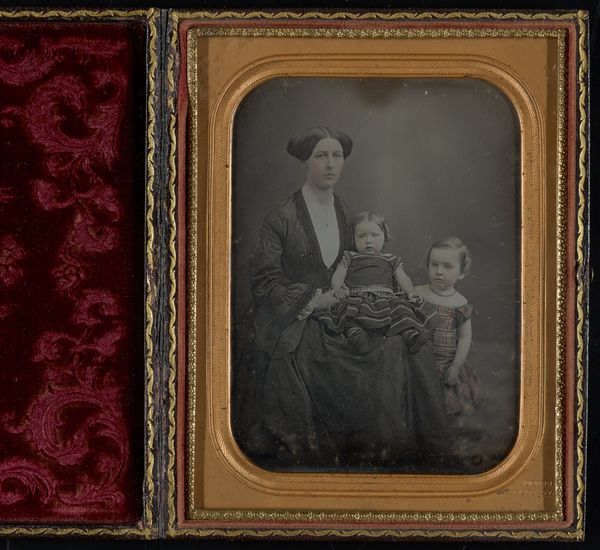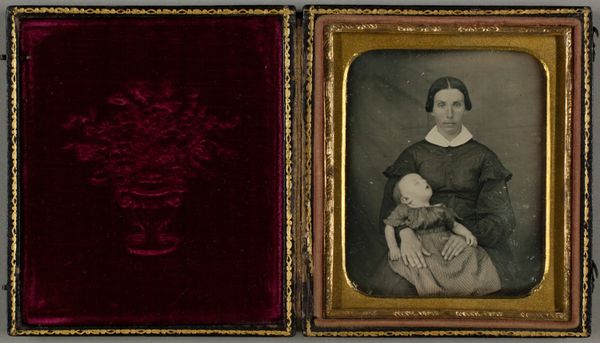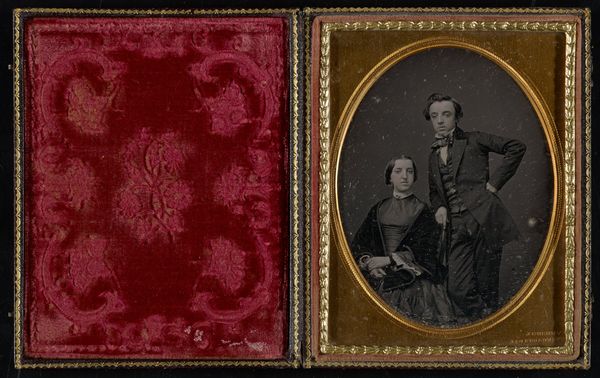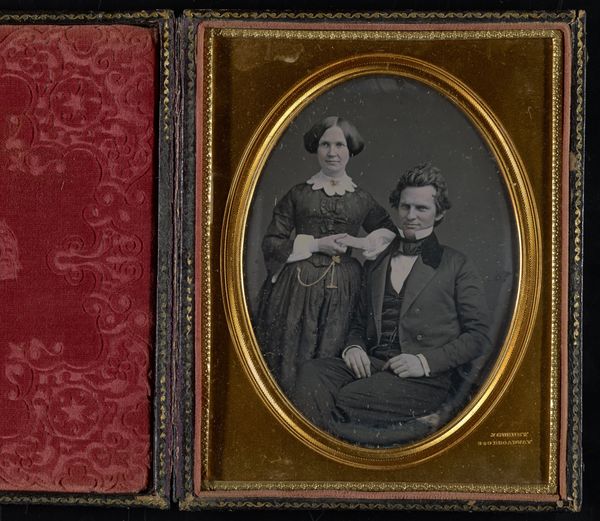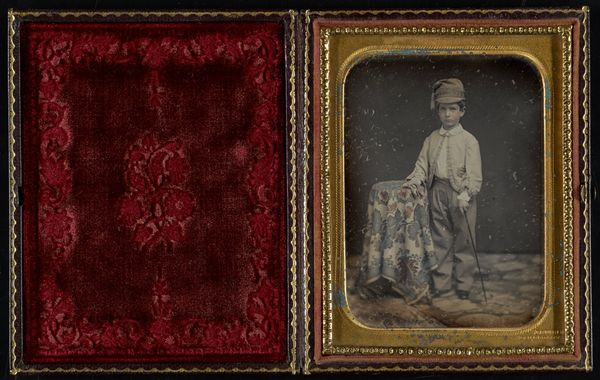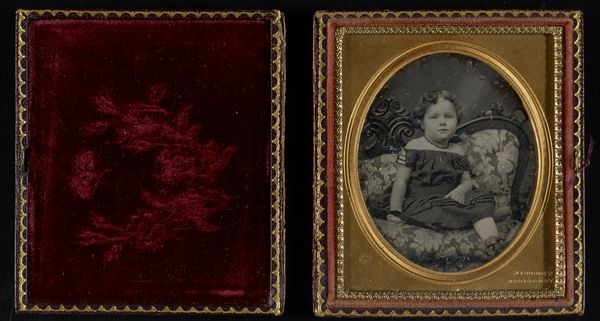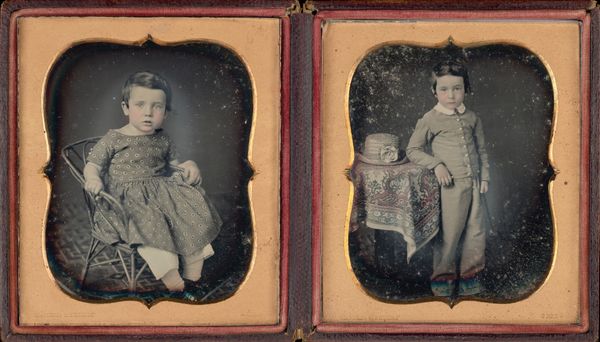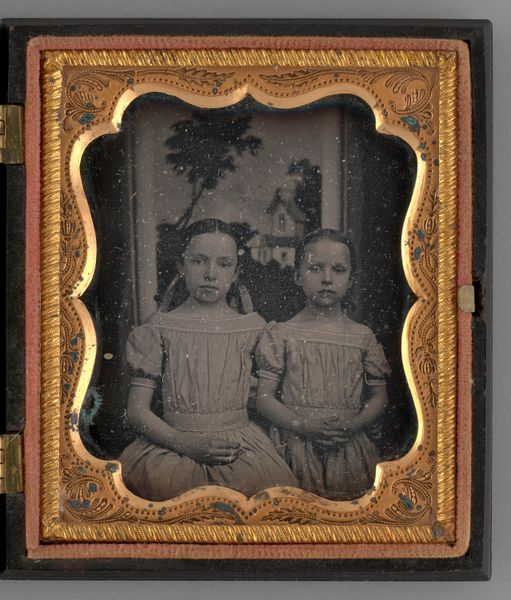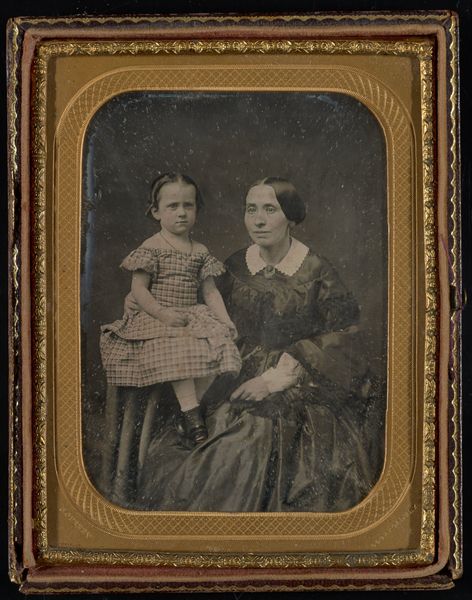![Untitled [portrait of a young boy and girl] by Jeremiah Gurney](/_next/image?url=https%3A%2F%2Fd2w8kbdekdi1gv.cloudfront.net%2FeyJidWNrZXQiOiAiYXJ0ZXJhLWltYWdlcy1idWNrZXQiLCAia2V5IjogImFydHdvcmtzLzg3ZTA4NGEwLTE3NmMtNDFjZi1iZTg0LWJhN2Y0ODg4YjI0Ny84N2UwODRhMC0xNzZjLTQxY2YtYmU4NC1iYTdmNDg4OGIyNDdfZnVsbC5qcGciLCAiZWRpdHMiOiB7InJlc2l6ZSI6IHsid2lkdGgiOiAxOTIwLCAiaGVpZ2h0IjogMTkyMCwgImZpdCI6ICJpbnNpZGUifX19&w=3840&q=75)
Untitled [portrait of a young boy and girl] 1852 - 1858
0:00
0:00
Dimensions: 4 1/4 x 3 1/4 in. (10.8 x 8.26 cm) (image)4 5/8 x 3 3/4 x 3/4 in. (11.75 x 9.53 x 1.91 cm) (mount)
Copyright: Public Domain
Editor: Here we have an untitled daguerreotype by Jeremiah Gurney, probably made sometime between 1852 and 1858. It depicts a young boy and girl. It strikes me how meticulously this object was crafted, even down to the velvet lining of the case. What stands out to you? Curator: What's compelling is how this image exemplifies early photographic processes becoming accessible commodities. The daguerreotype, a unique image on a silvered copper plate, moved portraiture from the elite to the burgeoning middle class. Think of the labor involved: from mining the silver to polishing the plate to the highly specialized work of developing the image itself. Editor: So, the very materiality tells a story of changing social dynamics? Curator: Precisely. Consider the clothing of the children; clearly, some care and expense was involved in dressing them. But then consider the pose and the backdrop - it suggests this family can afford the experience of commissioning an image. But who exactly are these people, and what's the relation between labourer and patron here? How does the exchange happen, and where? Editor: That's a perspective I hadn’t considered. It challenges my initial reading of it just being a simple family portrait. Curator: It speaks to a significant shift in how individuals wanted to present themselves and their loved ones within an increasingly industrial and market-driven society. We’re not just looking at an image; we're observing a moment where art, craft, and commerce intertwined to shape social identities. What do you take away from this analysis? Editor: That this daguerreotype isn't just a picture but a material document, revealing complex social and economic shifts through its very existence. Curator: Exactly. It's a potent reminder that art is never detached from the processes and conditions of its creation.
Comments
No comments
Be the first to comment and join the conversation on the ultimate creative platform.
